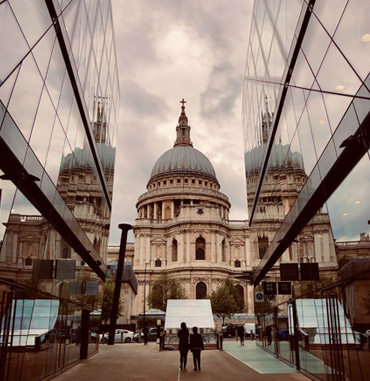IELTS Application Form
3.9KB
At Galaxy Visa Consultants, we take pride in providing an exceptional education system in the USA. The United States is internationally renowned for its prestigious universities and colleges, which offer a wide spectrum of academic programs and courses. Our mission is to assist aspiring students in accessing these unparalleled educational opportunities and help them achieve their dreams.


These advantages include:
Choosing the USA as your study destination offers a multitude of advantages and opportunities. Here are some compelling reasons why many international students opt for the USA:
World-Class Education: The USA is home to some of the world’s most prestigious universities and colleges. Its higher education system is known for its rigorous academic standards, cutting-edge research, and innovative teaching methods.
Diverse Range of Programs: American institutions offer a wide variety of academic programs and majors. Whether you’re interested in business, engineering, liberal arts, sciences, or the arts, you’ll find a program that suits your interests and career goals.
Research Opportunities: The USA leads the world in scientific research and innovation. If you’re passionate about research, you’ll have access to state-of-the-art facilities, renowned professors, and abundant funding opportunities.
Global Recognition: Degrees from U.S. institutions are highly respected and recognized worldwide. They can open doors to career opportunities and academic pursuits on a global scale.
Cultural Diversity: Studying in the USA exposes you to a rich cultural tapestry. You’ll have the chance to interact with people from diverse backgrounds, fostering cross-cultural understanding and global perspectives.
English Language Proficiency: If English is not your first language, studying in the USA can significantly enhance your English language skills. This is valuable for both academic and professional purposes.
Internship and Job Opportunities: The USA offers numerous opportunities for internships and practical training during and after your studies. This can provide valuable work experience and networking connections.
Flexibility in Education: The U.S. education system is known for its flexibility. You have the freedom to choose elective courses and customize your educational experience to align with your interests and career goals.
Scholarships and Financial Aid: Many U.S. institutions offer scholarships and financial aid to international students based on academic merit, talent, or need. This can help reduce the financial burden of studying abroad.
Quality of Life: The USA offers a high quality of life with modern infrastructure, healthcare facilities, and safety. It’s a great place to live and learn.
Career Opportunities: Graduates from U.S. institutions often find rewarding career opportunities, and the country is home to many multinational corporations. The Optional Practical Training (OPT) program allows international students to work in their field of study for up to 12 months after graduation.
Networking and Alumni Connections: U.S. universities have extensive alumni networks that can be valuable for future career prospects and collaborations.
Personal Growth: Studying abroad can be a transformative experience that fosters personal growth, independence, and adaptability. It challenges you to step out of your comfort zone and develop valuable life skills.
While the USA offers numerous advantages for international students, it’s important to research specific universities, programs, and locations to find the best fit for your academic and personal goals. Additionally, be prepared for the visa application process and consider factors like tuition costs and living expenses when planning your study abroad journey.
Process for obtaining an Australia study visa:
Obtaining a study visa for the USA involves a series of steps, and it’s important to start the process well in advance of your intended enrollment date. Here is a general outline of the process:
Choose a U.S. School: The first step is to select a U.S. institution that you wish to attend. Ensure that it is a Student and Exchange Visitor Program (SEVP)-certified school, which allows them to issue the required Form I-20.
Apply and Get Accepted: Apply to the school of your choice and receive an acceptance letter. You will need this acceptance letter for your visa application.
Pay the SEVIS Fee: The U.S. government requires all F and M visa applicants to pay the SEVIS (Student and Exchange Visitor Information System) fee. You can pay this fee online and will receive a receipt.
Complete the DS-160 Form: Fill out the DS-160 form online. This form is available on the U.S. Department of State website. After completing the form, you will receive a DS-160 confirmation page with a barcode that you’ll need for your visa interview.
Pay the Visa Application Fee: Pay the non-refundable visa application fee. The fee varies depending on the type of visa and the country from which you are applying.
Schedule a Visa Interview: Visit the website of the U.S. embassy or consulate in your home country to schedule a visa interview. You will need to provide the DS-160 confirmation page, visa application fee receipt, SEVIS fee receipt, and passport.
Prepare Required Documents: Gather the necessary documents for your visa interview, which may include:
Attend the Visa Interview: Attend the visa interview at the U.S. embassy or consulate in your home country. Be prepared to answer questions about your intended course of study, financial support, and ties to your home country. You may also need to provide biometric information, such as fingerprints.
Wait for Visa Approval: If your visa is approved, the consular officer will provide you with a visa stamp in your passport. Be sure to check the visa for accuracy before leaving the consulate.
Travel to the USA: With your visa in hand, you can make travel arrangements to the United States. Remember that you can typically enter the U.S. up to 30 days before your program start date as indicated on your Form I-20.
It’s crucial to check the specific requirements and procedures on the U.S. embassy or consulate website in your home country because they may have additional requirements or processes. Also, visa processing times can vary, so apply well in advance of your intended travel date.
Plot no 91, Model Town, Pehowa, Haryana 136128
+91 74190 33307
Mon – Sat: 8:00 am to 6:00 pm
Sunday: Closed
© All Copyright 2025 Galaxy Visa Consultants Develop by Glimmers Point
